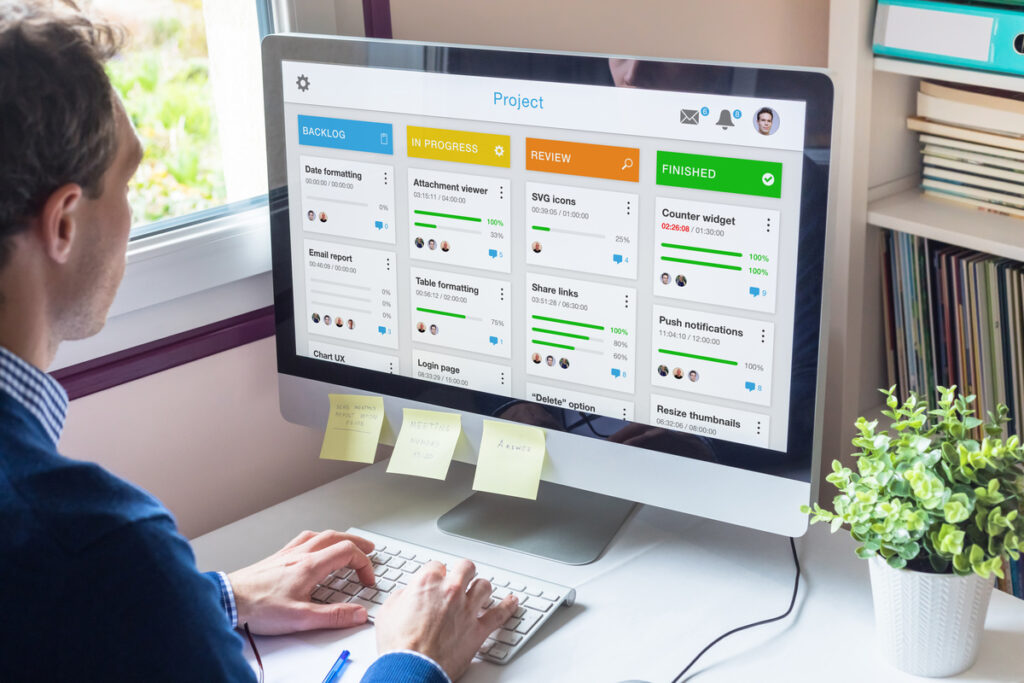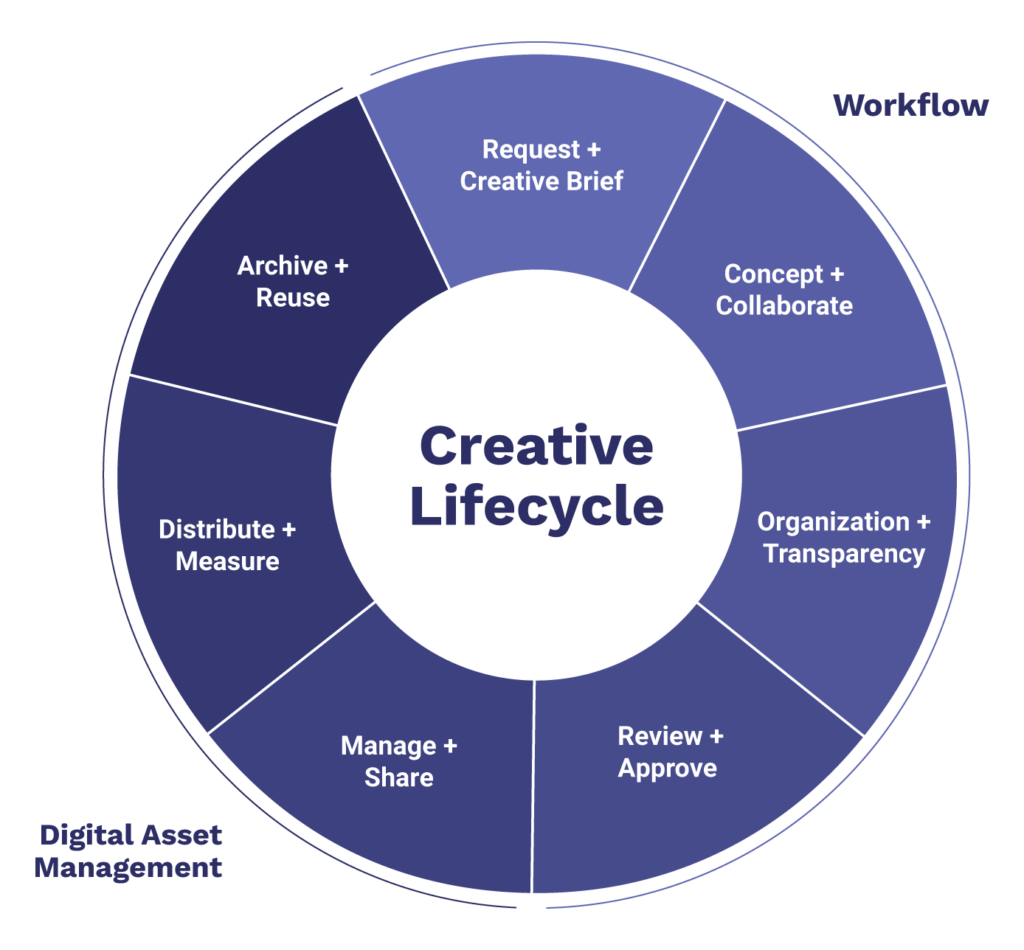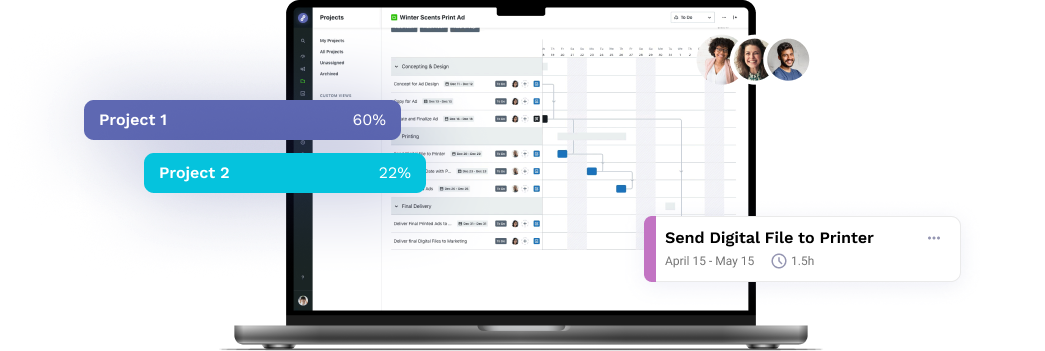
Agile Project Management – The Robert De Niro Way
At some point or another, you may have been amazed by one of Robert De Niro’s performances. Whether he plays Johnny Boy in Mean Streets, Travis Bickle in Taxi Driver, Jake LaMotta in Raging Bull, or any other role really, his method of acting is universally renowned. De Niro, who fully commits to every role he plays, is known to go to many extremes so he can prepare for and play his roles to perfection. He has been described as methodical, punctual, and fully prepared.
Unfortunately, the creative process for most teams is not that streamlined – leading to unnecessary drama, and endless back-and-forth messaging. This is especially true when you take a purely Waterfall approach. When every step of the process depends on what comes before it, one missed deadline can derail your entire project’s timeline. Likewise, if a creative owns only their piece of a project or campaign, the likely results are a siloed team, an incoherent final product, and a dissatisfied client.
All these factors make the Agile approach to project management much more appealing. Agile comes from the software development world, and a wide range of industries have adapted it. Agile helps teams work iteratively and collaboratively toward a common goal. As its popularity rises, more teams are evaluating how Agile processes can help meet the ever-increasing demand for creative content.
And while we cannot all be organized and meticulous world-renowned actors… We can certainly take some notes on the things that hugely successful people do right. So, what are the Agile overarching ideals, and how can you apply them to your team’s creative operations?
Recommended reading:
What Is Agile Project Management?
The benefits of an Agile project management approach have been touted through webinars, industry podcasts, and events. So how do you separate the hype from reality and determine if Agile will work for your creative team?
First, it is important to understand that Agile is not a one-size-fits-all approach. Although there are methodologies like Scrum and Kanban to help you function within an Agile framework, there is no silver bullet to becoming agile. Rather, Agile is about values and principles.

When you bring the aforementioned values together, the right mindset to unlock your team’s full potential unfolds right before your very eyes. And what does it entail? Breaking projects down into smaller chunks and testing the outcomes all along the way. It involves failing early and often, so your teams can adapt to change. Then, it calls for cross-departmental and functional collaboration with the goal of achieving the best result for each client. Simple, right?
What Are the Most Popular Agile Methodologies for Creative Teams?
Adopting key Agile practices could transform your teams’ productivity and help them stay on track. There is no doubt your creative team needs a boost. In fact, 48% of creative teams struggled with tight deadlines throughout 2022. With higher expectations comes a greater risk of creative team burnout, which can in turn lead to substandard work and low morale. To address this, consider adopting one or both Agile methodologies. They have proven both effective and beneficial for many creative teams.
1. Scrum Methodology
The term ‘scrum’ comes from rugby and describes a part of the match when teams come together to advance the ball. In Agile, Scrum functions in much the same way. Using Scrum fosters collaboration and breaks down silos. It does so by establishing a focused, productivity-driven timeline and meeting cadence. Scrum does not just invite teamwork. It demands it. And this is how you do it:
Step 1.
Break projects down into sprints that last for two weeks. You can adjust the length based on your team’s needs. The objective is to reach a tangible goal within a short time frame, so the team can quickly move on to the next part of the project.
Step 2.
Follow a specific meeting cadence to keep teams on track. This includes 1:1 meetings, kickoffs, daily check-ins, mid-sprint team check-ins, retrospectives, and reviews.
This may feel like a lot of meetings at first, and you might experience some resistance from your team when transitioning to this cadence. The purpose is not to fill your calendar with meetings, but to provide your team with many opportunities for meaningful collaboration and connection.
A thoughtful meeting cadence can make all the difference in allowing teams to stay on schedule and reach their goals. This is especially true for creative teams that work remotely. Keep in mind that you should drop anything that is not beneficial for your team. Scrum is not a formula. It is a framework. You are free to adjust the cadence to meet your needs.
Read more: Fast-Track Projects: A Useful Guide for Overwhelmed Marketing Teams
2. Kanban Methodology
Kanban is a Japanese word meaning “billboard” or “signboard.” In the creative realm, a Kanban board puts all the elements of your individual team members’ to-do lists in one visual space. Using physical or virtual cards, place each piece of the work process onto a physical or virtual workflow board.
These Kanban cards “swim” in lanes and visually illustrate work status. This provides you with insight into backlogs keeping your team behind schedule. Also, it gives you a big-picture view of started, in-progress, and completed tasks.
Depending on your preferred work styles, Kanban may be more useful for some team members than others. It can be a powerful tool for clients and managers to quickly check in and chart progress.
Shopping for Agile Project Management Technology? Get Support for Your Creative Operations Process Now!
Beyond implementing its methodologies, you may be shopping for Agile technology to help your teams adhere to your new creative operations sequence. The truth is any vendor who slaps an “Agile” label on their product is just trying to benefit from the popularity of the concept. No technology can magically make you agile. Rather, we should design technological tools to give you the freedom to set your operations and processes in whatever way you decide is best for your team.
What does that freedom look like? If you need some elements of a Waterfall approach – like blockers or prescribed steps – you should have the option to incorporate those. If you want to offer your teams Kanban boards or set up workflow deadlines based on your Scrum meeting cadence, your software should allow you to do that, too.
That is exactly how we designed Lytho, our signature creative operations platform.

Are you interested in creative operations software that will provide you with the support needed to transition to a more agile project management style? Lytho helps you streamline your entire workflow and harmonize all brand collateral under a single, uniform platform. Feel free to reach out to us by scheduling a demo and learning how our creative solutions can boost the effectiveness of your creative projects. We look forward to speaking with you!
Do you want to give yourself and your creative team more room for creative stimulation by automating the boring stuff? Lytho helps you streamline your entire workflow and harmonize all brand collateral under a single, uniform platform. Feel free to reach out to us by scheduling a demo and learning how our creative solutions can boost the effectiveness of your creative projects. We look forward to speaking with you!

Ready to simplify your creative operations and start having a little fun at work again? Schedule time to talk with us.
Let us show you how Lytho’s Creative Operations Platform helps in-house creative and marketing teams do better work, ease the stakeholder experience, and stay on brand.
Schedule a Demo